
Japan Airlines Class J Flight
Airline : Japan Airlines (JAL)
Flight No : JL512
Departure City : Sapporo New Chitose (CTS)
Arrival City : Tokyo Haneda (HND)
Equipment : A350-900 (JA05XJ)
Blocked Time : 1h35m
Seat No: 16A
Class J Background
After spending three days in Sapporo, it was finally time to return to Tokyo. Since the cabin was widely open, I was really tempted to upgrade back to First Class… though I ended up upgrading only to Class J for the sake of reviewing a different product for you 😉
On all non-wide-body domestic flights within Japan, the forward cabin on JAL is known as Class J. Whilst its name alludes to a Business Class-tier class of service, it is more akin to a hybrid of Premium Economy and regional Business Class. Class J passengers are treated to superior seats but the service does not come with the priority amenities associated with Business Class.
Check-in
I got to New Chitose Airport via the JR Line, arriving at the airport at 10.48 for this 13.15 departure. Like any major airport in Japan, New Chitose Airport has a section dedicated to Japan Airlines check-in counters. Similar to the arrangement at Haneda, most non-premium counters come in the form of automated check-in kiosks. After scanning the general area for a few seconds, I found the exclusive JAL First Class check-in area and headed there.



After confirming my oneworld Emerald status that I hold with Cathay Pacific, I was promptly assisted by the friendly check-in agent. Unlike my experience at Haneda, the agent here spoke good English.
Upgrading to Class J
As I have already explained the booking process for this flight in the JAL First Class review, I will focus only on the upgrade process for this flight. On domestic JAL flights, same-day upgrades are available 3 hours before departure. I was seriously tempted to upgrade to First Class as I reminisced about my flight to Sapporo,, though I ultimately decided against doing so. After reconfirming the space in Class J on the flight, I paid the JPY2000 (£12) upgrade fee, which I think is a phenomenal price.
After paying for the upgrade, I asked about getting a window seat, though the agent apologetically told me that one wasn’t available. Surprisingly enough, her face lit up a minute later, informing me that a previously blocked window seat had been made available. Better yet, the seat beside me was blocked off on account of my status. Yay Japan Airlines!
Lounge
Japan Airlines operates two lounges at Sapporo New Chitose Airport, comprising a Diamond Premier Lounge for top-tier elite members and First Class passengers. A supplementary Sakura Lounge is available for JAL Global Club, JAL Mileage Bank Sapphire, and oneworld Sapphire frequent flyers. I have reviewed both lounges in previous instalments. However, note that despite being the class of travel between First and Economy, Class J passengers do not ordinarily get any lounge access.
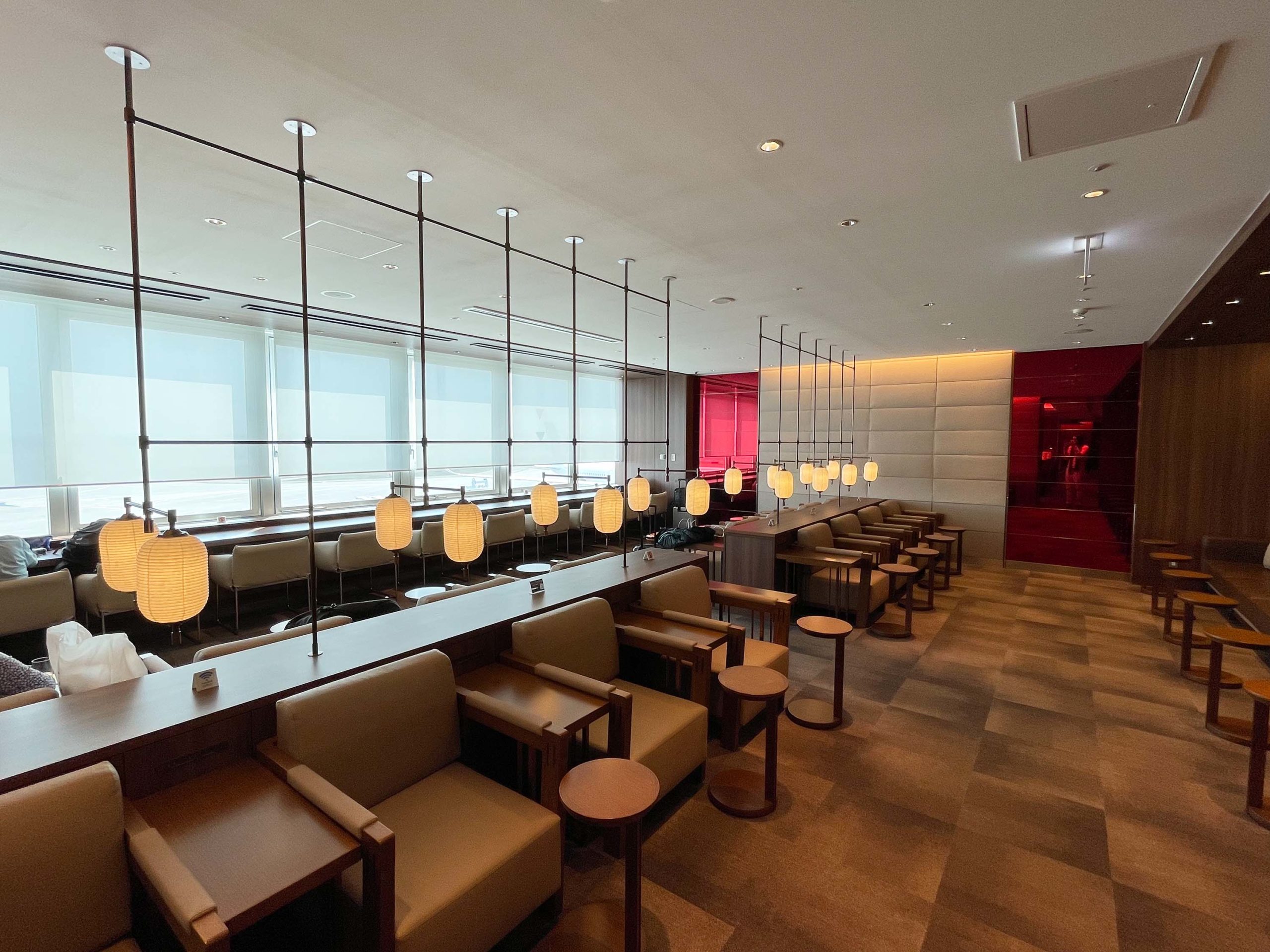
Boarding
Like the flight over to Sapporo, this flight boarded 15 minutes before the scheduled departure time. Japan Airlines has five distinct boarding groups, with the first two dedicated to elite and priority passengers. Class J, however, does not have a dedicated boarding group. Given its physical location at the forward middle section of the aircraft, most non-status Class J passengers will have to board last.

The gate announcement was conducted in Japanese and English, although the latter wasn’t as clear. Preboarding started at 13.30, allowing families and passengers requiring special assistance to board first. There were many families with young children on this flight, so general boarding only started five minutes later at 13.35. As I was already at the front of the queue of Group 1, I managed to board first and got empty cabin pictures!

Coincidentally, the aircraft flying us back to Tokyo was JA05XJ, which was the Airbus A350 that took me to Sapporo in the first place! What are the odds?! At the jetbridge, a sign indicated that Class J boarded via door 1 with First Class.

Japan Airlines A350 Cabin
Japan Airlines has two A350 configurations featuring either 56 seats or alternatively, a whopping 94 seats in Class J. The latter premium-heavy configuration was used on this flight, with Class J spread between two cabins. The first cabin sits between First Class and Door 2, fitting seven rows of a 2-4-2 configuration, totalling 56 seats. Right behind that is the smaller second cabin, with 38 seats in an identical eight-abreast configuration.


Like First Class, every seat is equipped with an inflight entertainment screen, which looked very neat from behind! The seats are actually based on the Recaro PL3530, which is used by Air France as its newest Premium Economy product. Regardless, it did feel slightly nicer than your typical Premium Economy seat!


I really liked the toned-down colour palette of the seats as well, which was very easy on the eye. Whilst the colour red is the reoccurring theme of the cabin, it wasn’t at all in-your-face, unlike a certain carrier (erhm, Hong Kong Airlines).


Seat details
Each seat features an individual reading light conveniently placed by the side of the seat, a cocktail table on the centre console, as well as a legrest. Honestly, I was really impressed by these seats, which I think easily top many Premium Economy class seats and even many single-aisle regional Business Class seats. Heck, whilst slightly narrower, this was even nicer than the Vietnam Airlines A321 Business Class seat I flew on to Saigon!

I was seated in the bulkhead, which practically has limitless legroom. Specifically, the distance between my knee and the bulkhead was an alarmingly generous 59 cm (I am 180 cm tall). Crikey, colour me impressed! And all this for JPY2000?!

If you couldn’t get a bulkhead seat, don’t worry as the legroom in the other rows is still very generous. There was a knee-to-seat back distance of about 24 cm, which was frankly phenomenal considering how short most Japan domestic flights are. What’s more, the 11.6-inch-sized entertainment screens on the seatback are big enough to take your mind away if the legroom somehow wasn’t enough!

In terms of storage, non-bulkhead seats have access to a slightly more expansive seatback pocket compared to the first row. Additionally, each seat has a thin storage compartment on the armrest, big enough for a phone or a book. On the opposite armrest are the entertainment remote control and manual buttons for the seat recline and footrest functions.

The tray table is also stored in the centre console. It folds in half and is remarkably sturdy, making it suitable to use to work on a laptop (as several people did on my flight!)

Recline
In flight, the seat reclines to a reasonably good angle. Whilst I’m generally not a fan of these calf-supporting leg rests, these ones didn’t leave my feet awkwardly hanging when used. In any case, again given the relatively short flight durations within Japan, this is already a more than necessary offering! Good job, JAL!


Departure from Sapporo
Boarding was completed at 13.53, just under 20 minutes after boarding started, and the doors were closed at 14.00. I’m always so impressed by how the airline could board a widebody plane in such a short timeframe, although at the same time, it does also increase the chance of an unnecessary delay. At this time, the purser made a welcome announcement in Japanese, followed by an automated English announcement. The playing of the safety video then ensued, which ironically features a Boeing 777-200ER, an aircraft recently retired by JAL.
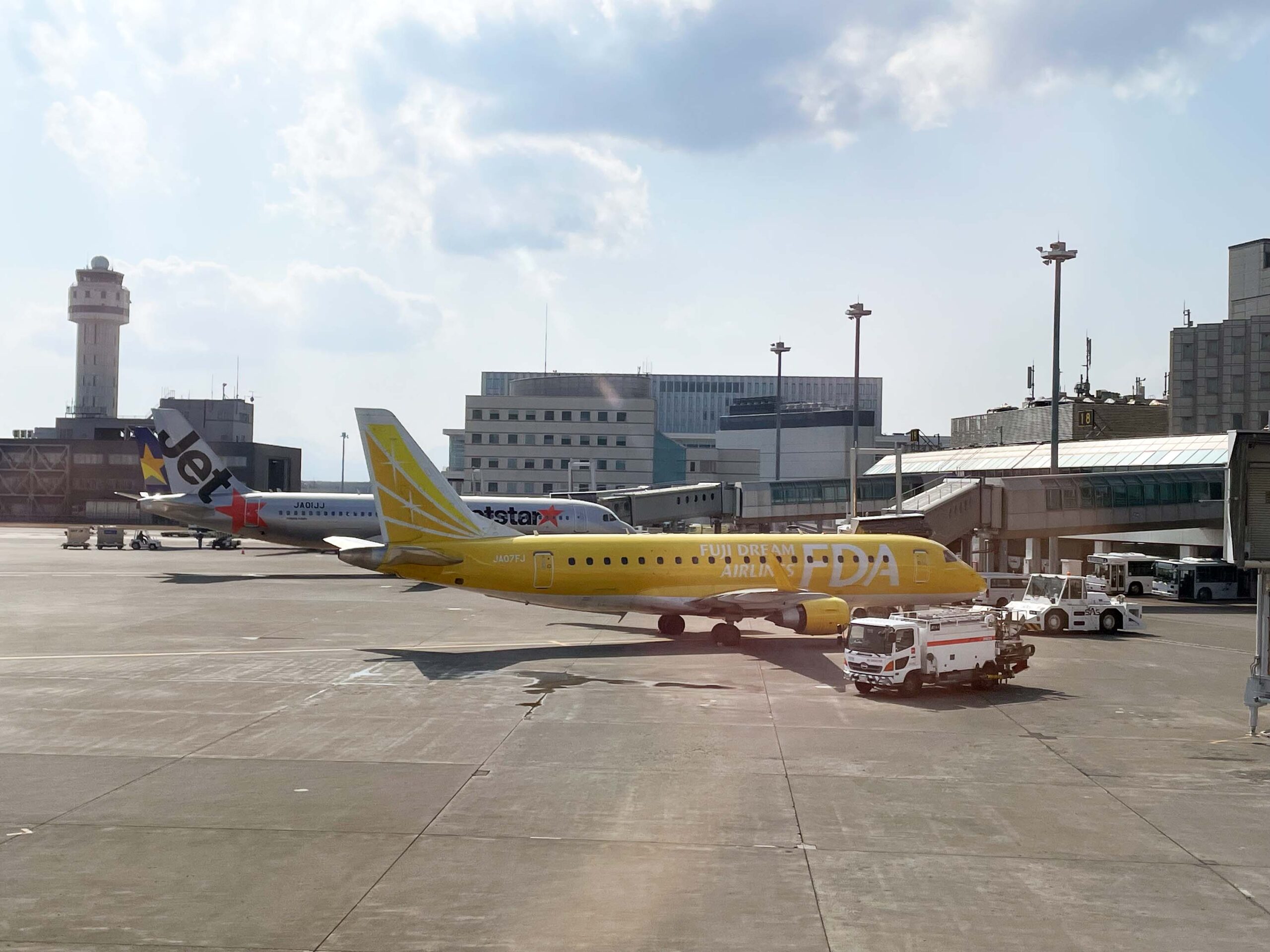

For some reason, however, we only started pushback at 14.06 – 16 minutes after our scheduled time of departure. We started taxiing to the runway before then mysteriously remaining idle on the tarmac for 10 minutes. We only finally took off 13 minutes later at 14.19.

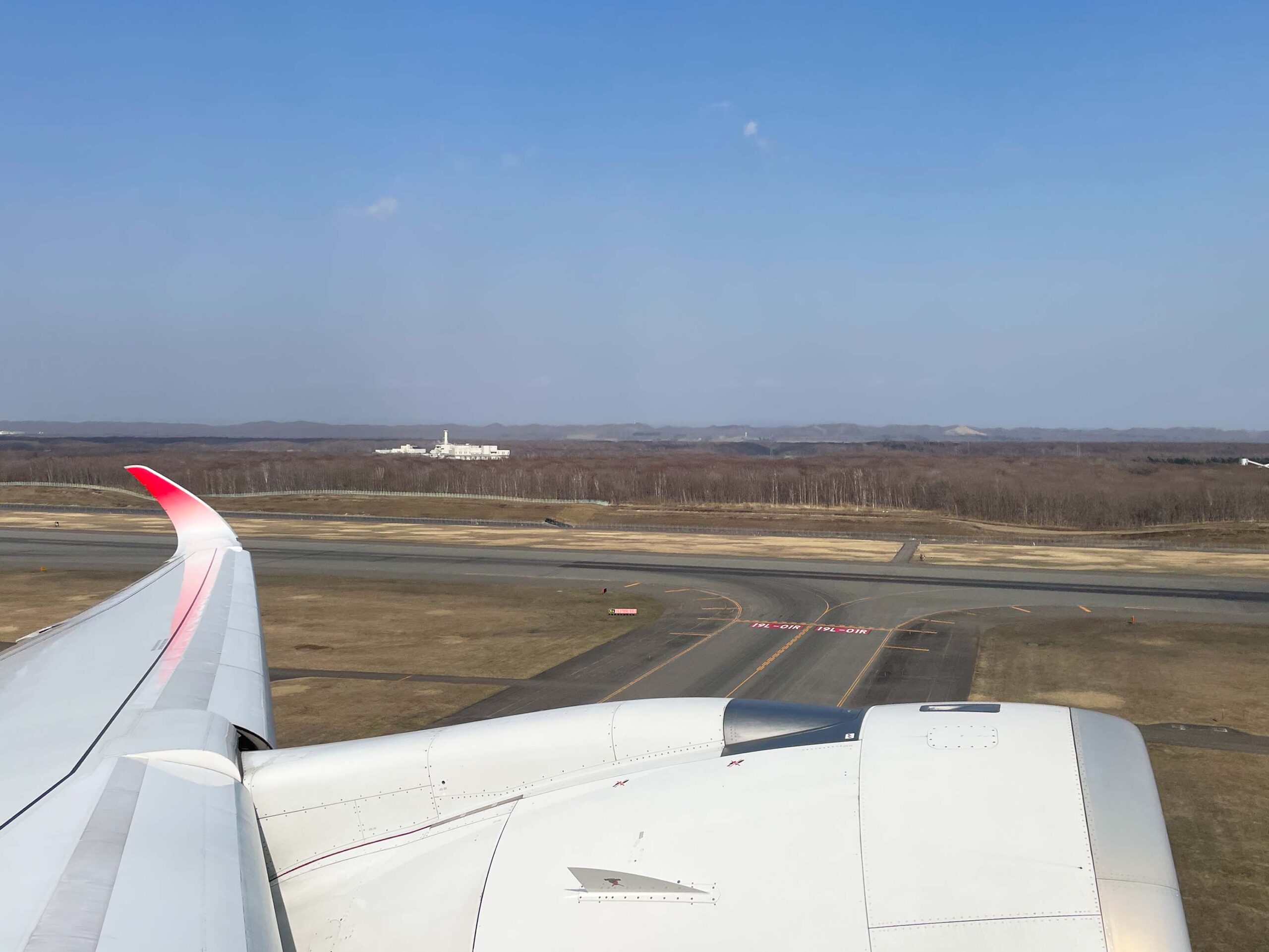
To note, the A350 tail camera function was interestingly not disabled during takeoff, unlike on my outbound flight. I had this switched on, to supplement the views from the window… 😉
Inflight Entertainment
To rehash from my JAL First Class review, the movie selection was quite limited, featuring a mix of old and new releases. But again, this was already more than necessary, considering that the duration of every movie exceeded our flight time! As we ascended into the clear blue sky, I decided to watch a documentary about ramen, which I found to be quite inspirational.

The contents of the seat pocket are pretty much identical to the one in First Class. Available in JAL’s Skywards Inflight Magazine, as well as an inflight shopping catalogue sheet. Also provided is a pair of flimsy headphones similar to those provided on international Economy Class flights.

Free WiFi Service
Again to repeat the things I said in my previous review, JAL offers free WiFi on its domestic service. Logging in initially seemed quite complicated, but a nifty informative sheet is provided in the seat pocket. I was connected for most of the flight, although the speeds were more suited for messaging than anything else.


Inflight Beverage Service
Whilst First Class is treated with an exceptional meal service, Class J only gets a beverage run similar to Economy Class. In that sense, you are merely paying for the seat, since there are no service differentiators between Class J and Economy Class. The curtains between the cabins weren’t even closed during the service, since the beverage cart continues to Economy Class after Class J is served.
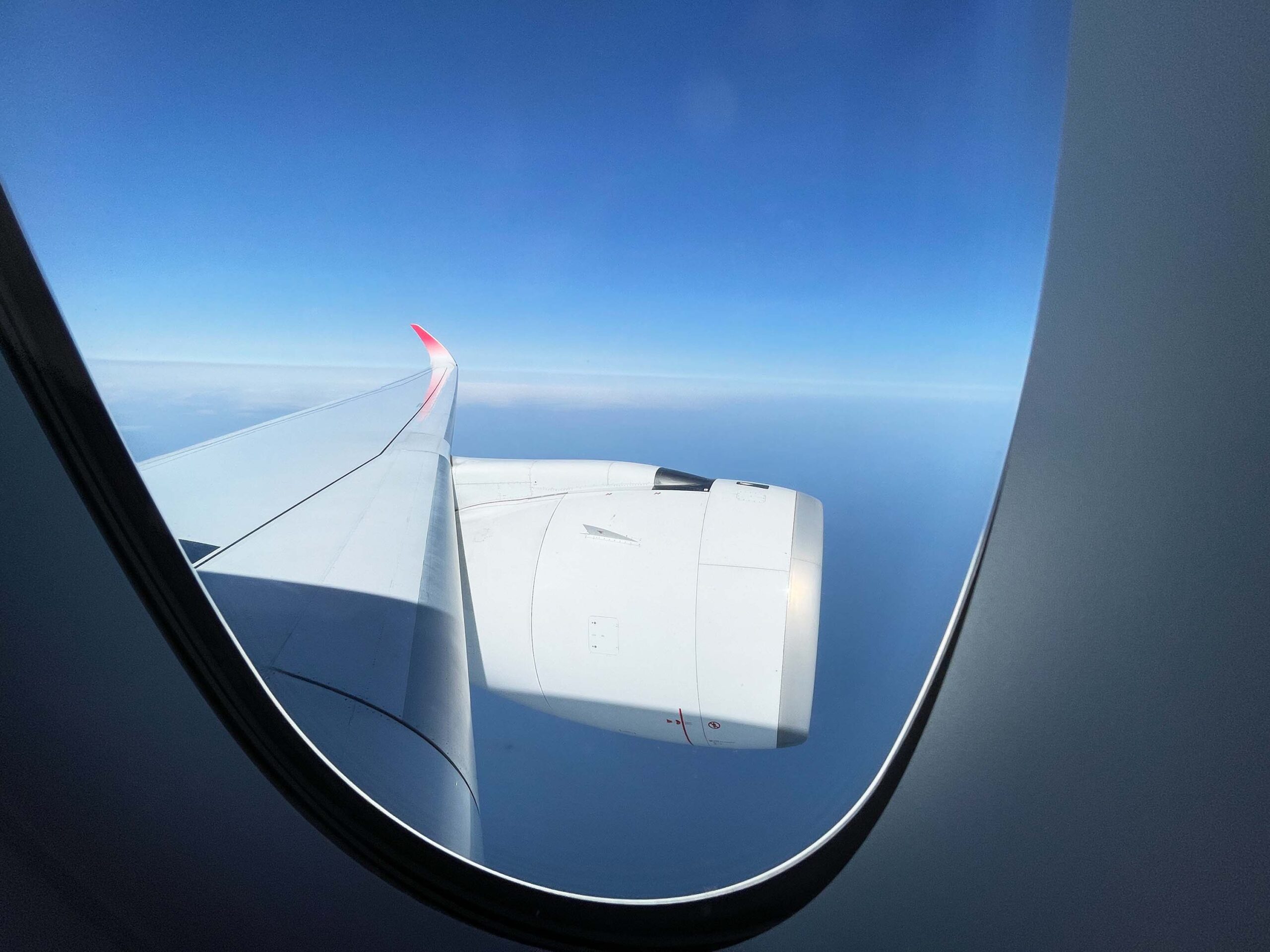
The seatbelt signs were switched off at 14.27, by which time the crew quickly sprung into action. The beverage service started 10 minutes later at 14.37. With a beverage menu in hand, they went row to row offering a drink to each passenger.
The beverages offered as part of this service include JAL’s special Sky Time Peach & Grape juice, Minute Maid-branded apple juice, Coca-Cola, I LOHAS mineral water, hot green tea, Ayataka-branded cold green tea, coffee from JAL Cafe Lines, and my personal favourite – consomme soup! Unsurprisingly, I opted for the consomme soup, cause there’s no feeling like sipping on a salty broth inside a carbon fibre tube travelling at 35,000 feet.

Whilst the crew seemed quite cold and unapproachable at the early stages of the flight, they were very friendly and thoughtful inflight. For instance, they proactively asked a passenger sitting in a full row if he’d like to move to an emptier one behind. This also gave a bit more space for the mother carrying an infant sitting behind him. After the beverage run, I was even asked if I’d like another drink, which I completely didn’t expect!
Toilets
After the beverage service, I decided to quickly check out the lavatories. Class J on this premium heavy A350-900 has two dedicated lavatories by each side of the galley between the two cabins. Additionally, the lavatory on the left-hand side is wheelchair accessible and has a diaper-changing table. Regardless, there was nothing to stop passengers in Economy from using these lavatories, though nobody did that on my flight.

Expectedly, the lavatory was dry and spotlessly clean. Just like the one in First Class, there aren’t any special amenities offered inside.
JAL Disney Postcards
On the way back to my seat, I noticed a few postcards available on the bulkhead literature pockets. They feature the JAL Dream Express 767 launched in collaboration with Disney for the latter’s 100th anniversary. I took a couple of the postcards – one for a nice keepsake and the other to add to the stack of Disney postcards I’ve bought for my sister.

Arrival in Haneda
As is the standard on JAL, the captain made his first announcement mid-flight, informing us of the descent and stating the details of our arrival at Haneda Airport. Second, he also apologised for the delayed takeoff, which was apparently due to an ATC disruption at New Chitose Airport. He then wished us an enjoyable flight on the A350, which I guess shows how much pride the airline has in these new jets!

15 minutes before our expected landing time, the cabin was prepared for landing. On the approach, we had some nice views of Saitama, which as locals jokingly like to say, is the uncool prefecture (ダ埼玉). 😛

We finally touched down at 15.34, nine minutes past the scheduled arrival time. Despite the clear weather conditions, we still had a rather rough landing at Haneda Airport. Following this, we taxied for a relatively long six minutes before pulling into a gate at Terminal 1, where we parked next to another gorgeous Japan Airlines A350-900. Seriously though, what a beautiful plane!


The doors opened at 15.45, 20 minutes past our scheduled arrival time, in which I disembarked from Door 2. It was then a leisurely walk to the arrivals hall. At the baggage claim, the bags showed up 10 minutes after I disembarked, with my bag among the first few on the belt. What a sweet conclusion to this great flight!
Verdict
Overall, I had a really good flight on Japan Airlines’ Class J on the Airbus A350-900. Given the comfort and generous space of the seats, I found that the JPY2000 upgrade fee is practically unbeatable. However, whilst this is a domestic ‘Business Class’ product of sorts, do temper your expectations since Class J is all about a bigger seat. I’d definitely upgrade to Class J again, but likelier perhaps in the event in which First Class isn’t available… 😉

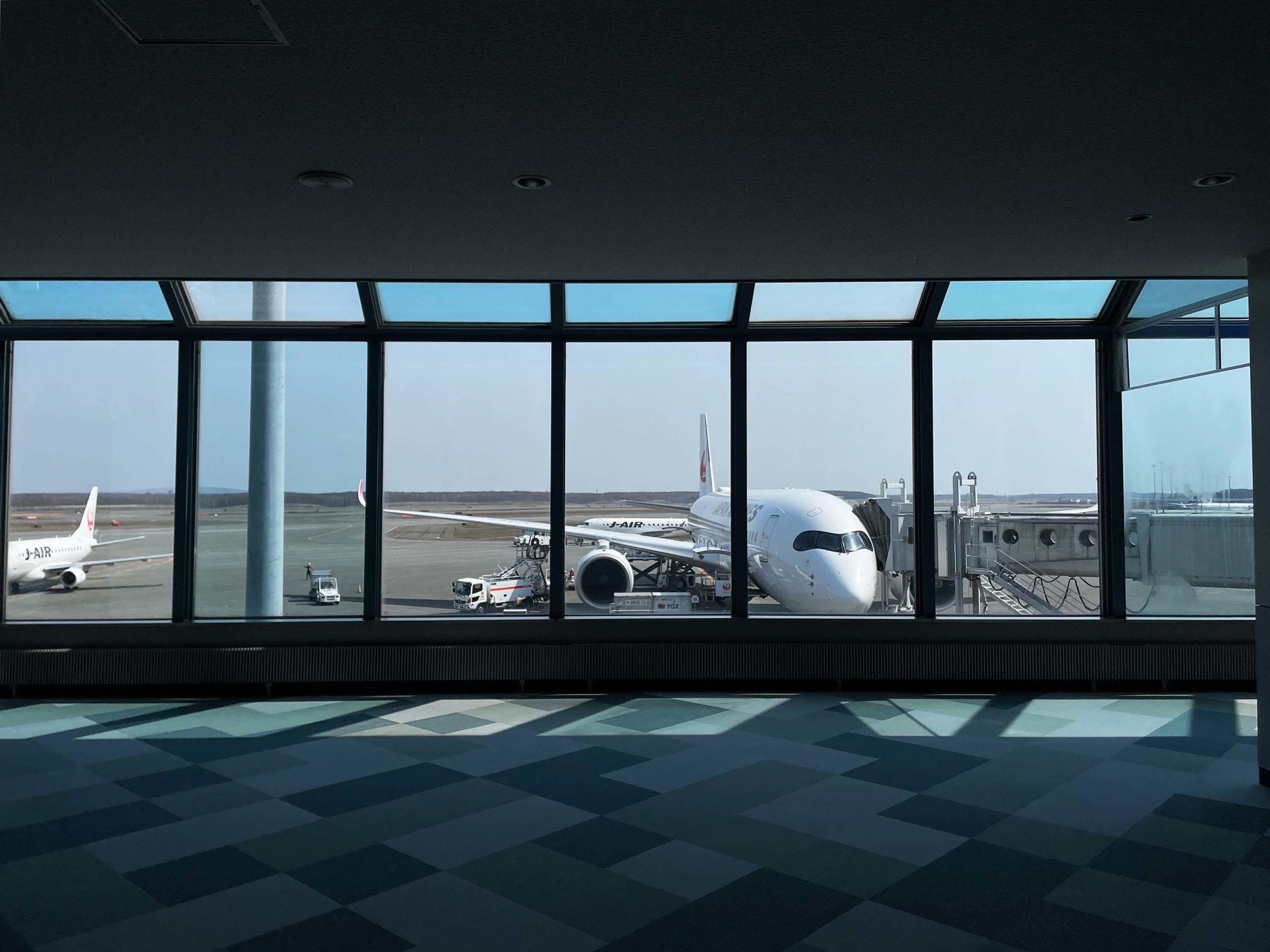
Leave a Reply